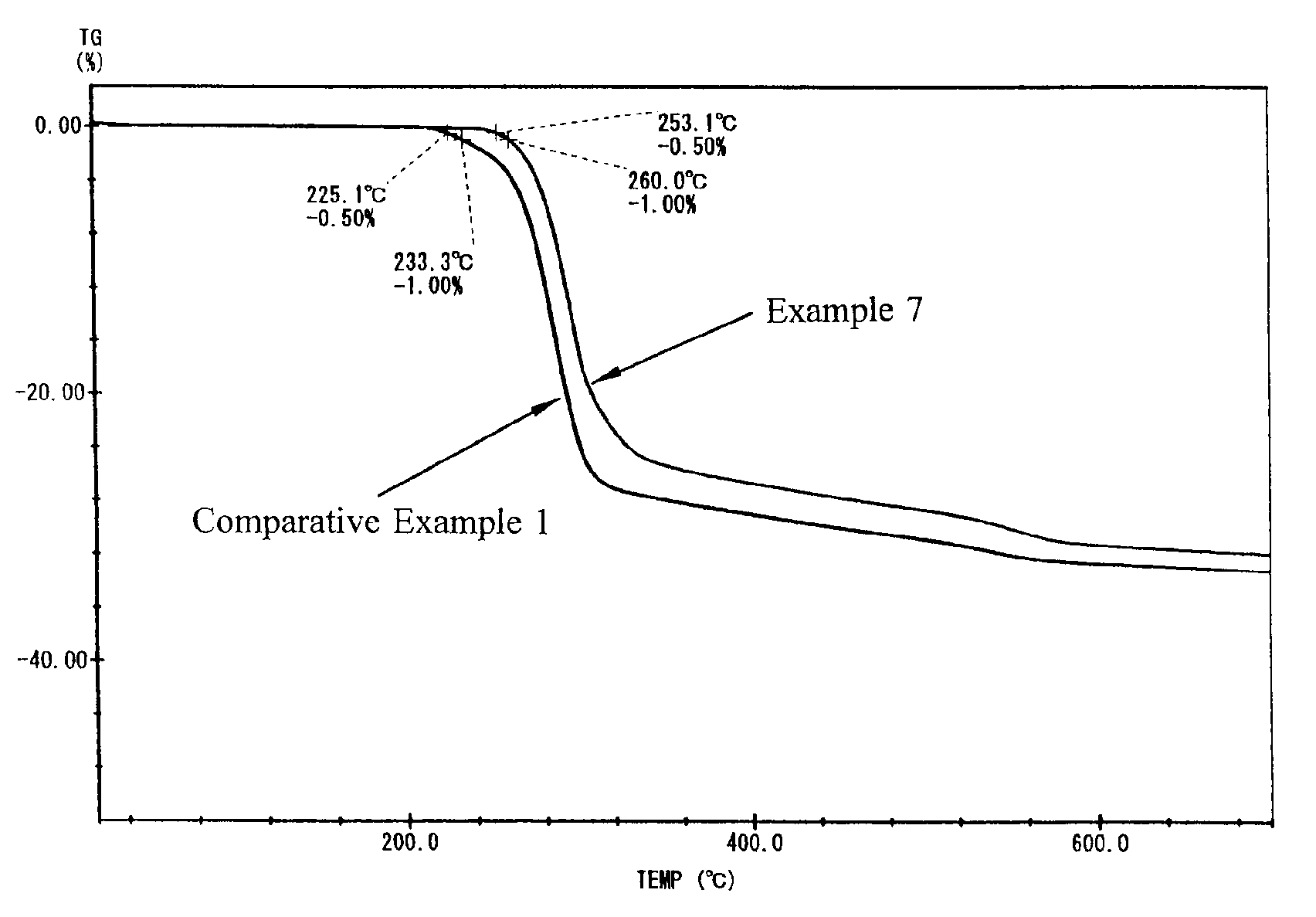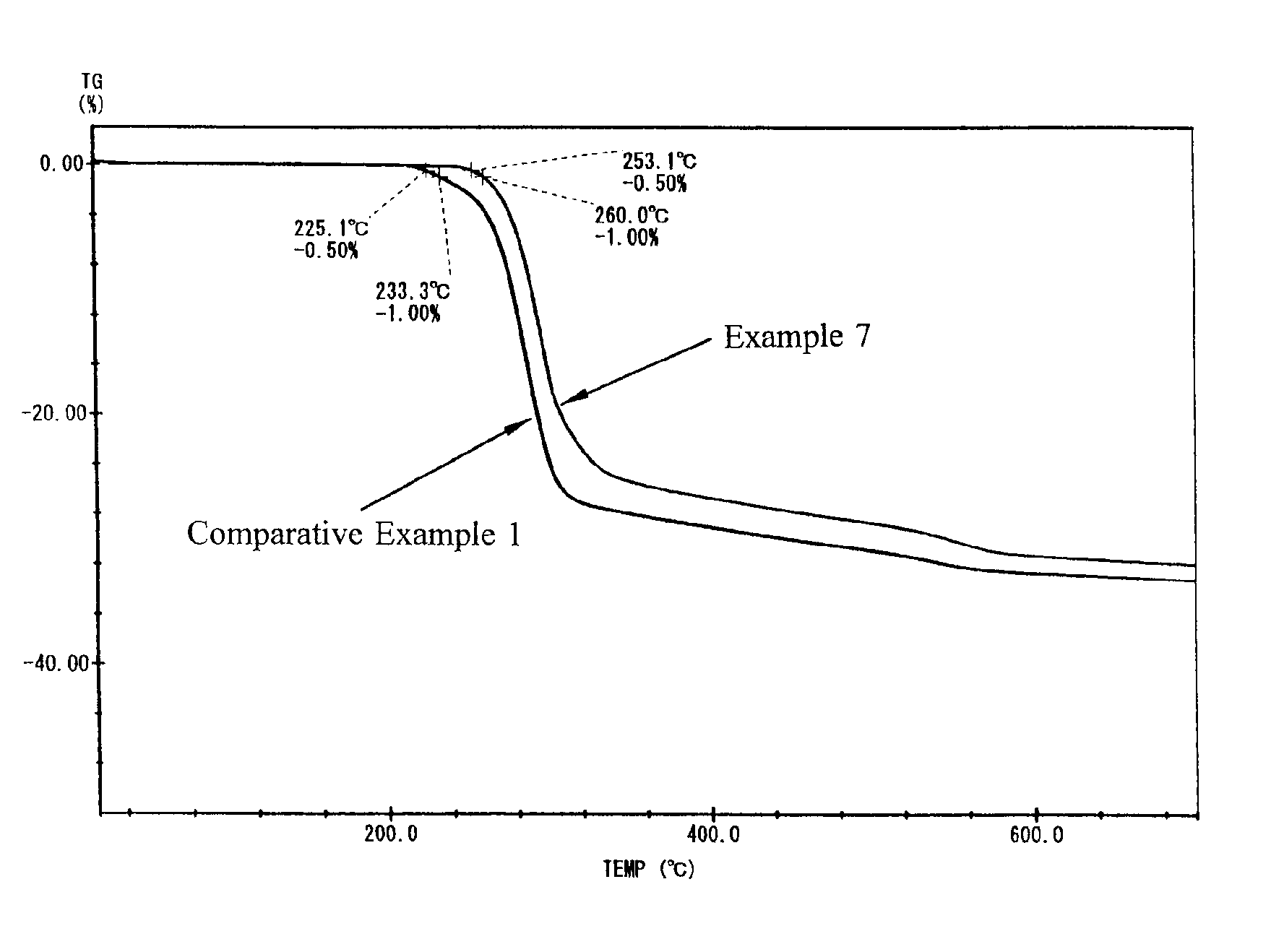Heat-resistant aluminum hydroxide and method for preparation thereof
a technology of aluminum hydroxide and heat-resistant aluminum, which is applied in the field of new aluminum hydroxide, can solve the problems of increasing the demand for flame retardants, reducing the yield of molded products, and deteriorating the physical properties of molded products, so as to improve the flame retardant properties of materials
- Summary
- Abstract
- Description
- Claims
- Application Information
AI Technical Summary
Benefits of technology
Problems solved by technology
Method used
Image
Examples
examples 1 to 19
(Preparation of Heat-Resistant Aluminum Hydroxide 1)
[0021]A commercially available aluminum hydroxide (manufactured by Sumitomo Chemical Co., Ltd., hereinafter, C-303) was used in Examples 1 to 11; a commercially available aluminum hydroxide (manufactured by Nippon Light Metal Co., Ltd. hereinafter B703), in Examples 12 and 13; a commercially available aluminum hydroxide (manufactured by Nippon Light Metal Co., Ltd. hereinafter, B1403), in Example 14; a commercially available aluminum hydroxide (manufactured by Nippon Light Metal Co., Ltd. hereinafter, BF013), in Example 15; a commercially available aluminum hydroxide (manufactured by Sumitomo Chemical Co., Ltd., hereinafter, C-3005), in Examples 16 and 17; and a commercially available aluminum hydroxide (manufactured by Showa Denko K.K., hereinafter, H-42M), in Examples 18 and 19, respectively in an amount of 400 g. The reaction retarders used were lactic acid (manufactured by Kanto Chemical Co. Inc.), phosphoric acid (manufactured...
examples 20 to 40
(Preparation of Heat-Resistant Aluminum Hydroxide 2)
[0036]Heat-resistant aluminum hydroxides were prepared under a predetermined condition by using the reaction retarders shown in Table 2. C-303 was used as the raw aluminum hydroxide in Examples 20 to 39, and BF083 (manufactured by Nippon Light Metal Co., Ltd. average diameter: 8 μm) in Example 40. The heat-resistant aluminum hydroxides of Examples except those of Examples 25, 26, 36, and 37 were prepared in a similar manner to Examples 3 to 19 above (preparation of heat-resistant aluminium hydroxides 1) (dry treatment). The heat-resistant aluminum hydroxide of Example 25 was prepared by mixing 1 g of white carbon to 50 g of aluminum hydroxide in a mixer and processing the mixture in an autoclave (externally heated autoclave, manufactured by Osaka Boiler Mfg. Co., Ltd., capacity: 100 ml, withstanding pressure: 5 MPa). The heat-resistant aluminum hydroxide of Example 26 was prepared by mixing 10 kg of white carbon to 500 kg of alumin...
PUM
| Property | Measurement | Unit |
|---|---|---|
| diameter | aaaaa | aaaaa |
| temperature | aaaaa | aaaaa |
| temperature | aaaaa | aaaaa |
Abstract
Description
Claims
Application Information
 Login to View More
Login to View More - R&D
- Intellectual Property
- Life Sciences
- Materials
- Tech Scout
- Unparalleled Data Quality
- Higher Quality Content
- 60% Fewer Hallucinations
Browse by: Latest US Patents, China's latest patents, Technical Efficacy Thesaurus, Application Domain, Technology Topic, Popular Technical Reports.
© 2025 PatSnap. All rights reserved.Legal|Privacy policy|Modern Slavery Act Transparency Statement|Sitemap|About US| Contact US: help@patsnap.com


